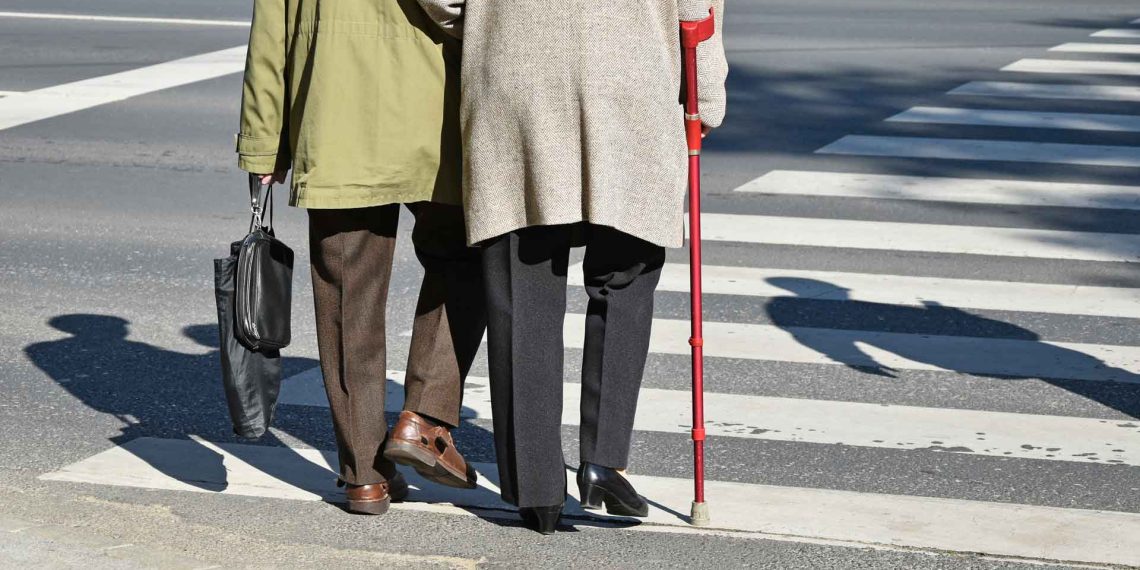Bakersfield is a place where reckless driving is not a new concept. According to a report by ABC, more than 112 accidents happened at Bakersfield intersections alone between 2011 and 2021. When it comes to pedestrian safety in Bakersfield, California, the elderly face many challenges that can result in car accidents. To prevent such incidents, it is important to address these specific concerns. In this article, we will explore the factors that contribute to the vulnerabilities faced by older pedestrians and suggest strategies for improving their safety on the roads.
If you are interested in seeking legal advice on an elderly pedestrian accident, then you can contact a Bakersfield car accident attorney. You will always have an expert by your side so that you can make the right decisions.
Table of Contents
Physical Limitations
As people age, they naturally experience limitations that can make navigating traffic more difficult and increase their vulnerability as pedestrians. It is crucial to recognize and understand these limitations in order to develop solutions. Common issues faced by older adults include reduced mobility, vision impairments, hearing loss, and slower reaction times – all of which can put them at risk when crossing roadways.
To tackle these challenges, it is necessary to make infrastructure improvements specifically tailored for pedestrians. Widening sidewalks to accommodate mobility aids like wheelchairs or walkers can significantly enhance accessibility. Implementing tactile pavements with texture contrasts at pedestrian crossings and ramps can also play a role in boosting the confidence of older individuals when they cross streets.
Educational Programs
In addition to changes, educational programs targeting older citizens are vital for promoting safe practices when navigating traffic. Community programs that involve professionals educating adults about the dangers of jaywalking, providing guidance on using crosswalk signals, and explaining commonly encountered traffic signs have a significant impact on pedestrian safety.
Collaboration between centers or local organizations, traffic safety departments, and police authorities can lead to workshops that address best practices tailored specifically for elderly residents. These workshops should be interactive and informative, incorporating real-life scenarios that relate to the needs of seniors. By equipping them with knowledge and strategies for pedestrian behavior, we empower them to navigate roads responsibly.
Enhanced Driver Awareness
While it’s important to educate seniors, increasing awareness among drivers about the vulnerabilities faced by pedestrians is equally crucial. Implementing driver education programs that emphasize vigilance when encountering pedestrians can foster a culture of responsible driving that prioritizes pedestrian safety.
Respecting designated crosswalk areas and exercising caution at intersections are habits that all drivers should adopt. Additionally, installing road signs in elderly areas as reminders for motorists to observe reduced speed limits in these zones, along with actively monitoring compliance, can significantly contribute to creating safer road environments for pedestrians of all ages.
Smart Traffic Light Systems
Utilizing advancements is another effective way to protect elderly pedestrians. Intelligent traffic light systems that adapt signal timings based on how many pedestrians are present give priority to citizen crosswalks during busy times, and synchronizing signals along popular walking routes can greatly enhance safety.
Improving visibility for both pedestrians and drivers is also crucial. Implementing strategies such as enhancing street lighting near crosswalks and incorporating elements like pedestrian countdown timers or LED strips embedded into curbs can indirectly reduce accidents involving older pedestrians.
Community Engagement
Creating a community that values the needs of vulnerable populations plays a vital role in creating a safe environment for all pedestrians. Establishing volunteer groups to keep pathways clear from obstacles like fallen branches or accumulated snow during winter months is incredibly valuable.
Moreover, organizing community events dedicated to pedestrian safety can strengthen community engagement while getting local businesses involved as sponsors can provide funding for improvements. Collaborating with advocacy groups focused on rights and inclusive urban environments encourages participation from all stakeholders and contributes to the development of public spaces that prioritize the safety of elderly pedestrians.
Conclusion
Addressing the challenges faced by pedestrians requires efforts from individuals, organizations, and authorities alike. By improving the accessibility of infrastructure, implementing educational programs tailored to the needs of seniors, promoting driver awareness utilizing technology solutions, and encouraging community involvement, we can establish roadways that empower older adults to walk independently with a sense of safety. By taking such steps, we are laying the foundation for a future where pedestrians of all ages and physical capabilities can confidently and securely navigate our urban environments.

